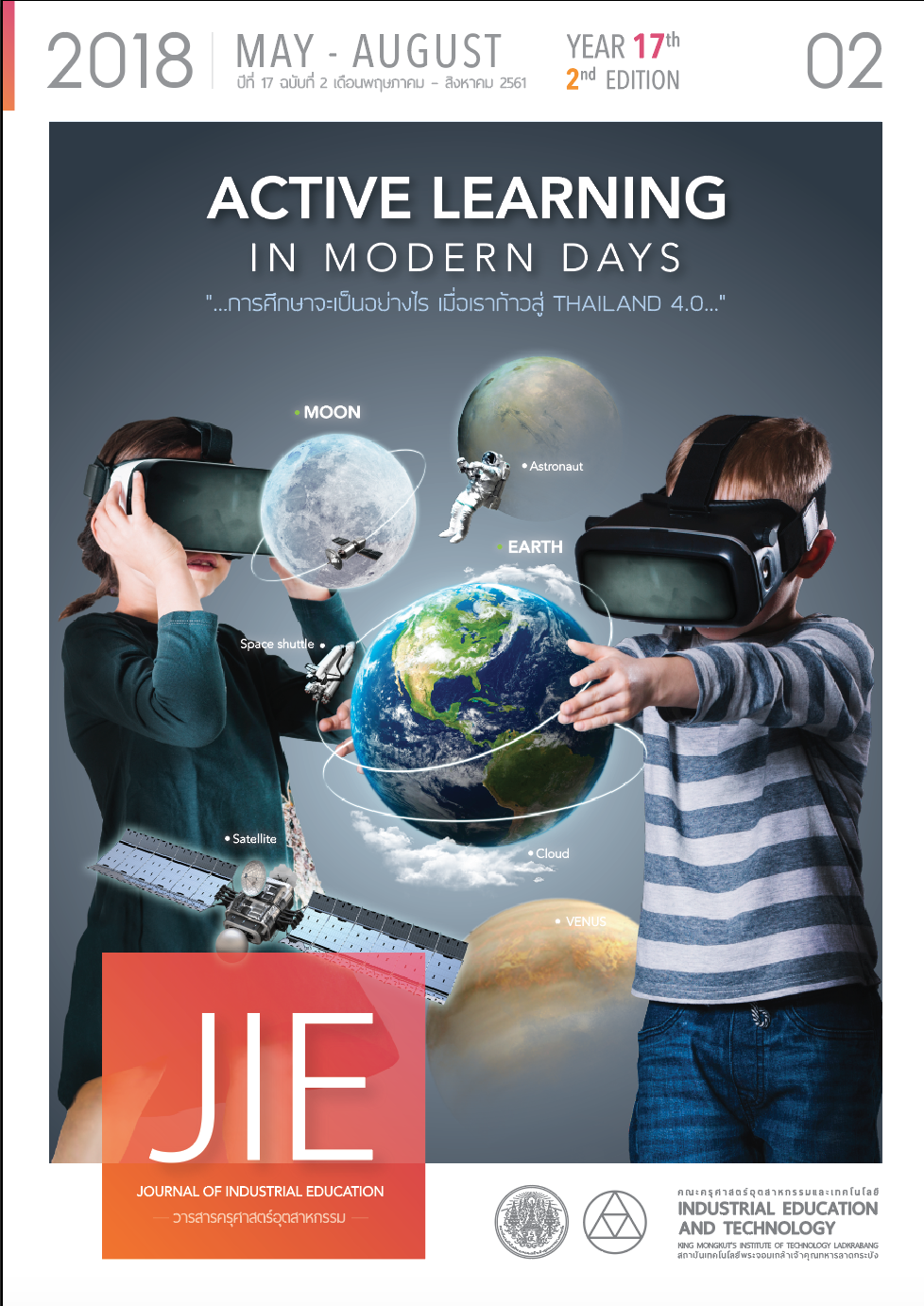แนวทางการพัฒนาภาวะผู้นำครูโดยใช้กรอบความคิดเติบโตของข้าราชการครู โรงเรียนสังกัดสำนักงานเขตพื้นที่การศึกษามัธยมศึกษา เขต 3 จังหวัดนนทบุรี
คำสำคัญ:
การพัฒนา, ภาวะผู้นำครู, กรอบความคิดเติบโตบทคัดย่อ
การวิจัยครั้งนี้เป็นการวิจัยเชิงสำรวจ มีวัตถุประสงค์ 1) เพื่อศึกษาระดับภาวะผู้นำครูโดยใช้กรอบความคิดเติบโต ของข้าราชการครู 2) เพื่อเปรียบเทียบภาวะผู้นำครูจำแนกตามลักษณะทางประชากรศาสตร์ และ 3) เพื่อศึกษาแนวทาง การพัฒนาภาวะผู้นำครู โดยใช้แบบสอบถามในการเก็บข้อมูลสุ่มตัวอย่างแบบใช้หลักความน่าจะเป็น จำนวน 340 ชุด วิเคราะห์ข้อมูลและแปลผลด้วยโปรแกรมสำเร็จรูปทางสถิติ สถิติที่ใช้ในการวิเคราะห์ข้อมูล ได้แก่ จำนวน ร้อยละ ค่าเฉลี่ย ส่วนเบี่ยงเบนมาตรฐาน การทดสอบที การวิเคราะห์ความแปรปรวน โดยกำหนดค่านัยสำคัญทางสถิติที่ระดับ .05 และการวิเคราะห์เนื้อหา ผลการวิจัย พบว่า 1) ข้าราชการครูส่วนใหญ่เป็นเพศหญิง อายุ 31 – 40 ปี การศึกษาระดับปริญญาตรี และอยู่ในโรงเรียนขนาดใหญ่พิเศษ 2) ภาวะผู้นำครูโดยภาพรวมอยู่ในระดับมากที่สุด ลำดับแรก ด้านการสร้างแรงบันดาลใจ รองลงมา ด้านอุดมการณ์ ด้านการเรียนรู้ ด้านการพัฒนา และด้านความกล้าแสดงออกอย่างสร้างสรรค์ ตามลำดับ 3) ข้าราชการครูที่มีระดับการศึกษาต่างกันมีภาวะผู้นำครู ด้านการเรียนรู้ แตกต่างกัน อย่างมีนัยสำคัญทางสถิติที่ระดับ .05 4) ข้าราชการครูที่อยู่ในโรงเรียนที่มีขนาดต่างกันมีภาวะผู้นำครูโดยภาพรวมแตกต่างกันอย่างมีนัยสำคัญทางสถิติที่ระดับ .05 และ 5) แนวทางการพัฒนาภาวะผู้นำครูประกอบด้วยนโยบายด้านการพัฒนากระบวนการเรียนรู้เชิงรุก และด้านการทำงาน เชิงระบบอย่างยั่งยืน การวิจัยครั้งนี้ก่อให้เกิดองค์ความรู้เกี่ยวกับคุณลักษณะด้านการสร้างแรงบันดาลใจ ด้านอุดมการณ์ และด้านการเรียนรู้เป็นองค์ประกอบที่สำคัญของภาวะผู้นำครูในยุคปัจจุบัน
เอกสารอ้างอิง
[2] Pharadawisit Srivichairat. 2010. Teacher ’ s Quality and Educational Quality. Bangkok: Catholic Educational.
[3] Pariyaporn Tungkunanan. 2014. A Development of the Administration Model of Teacher Training Center of the Faculty of Industrial Education at King Mongkut's Institute of Technology, Ladkrabang. Journal of Industrial Education, 15(1), p. 38-45.
[4] OECD. 2012. PISA 2012 Results in Focus. Retrieved October 13 2017, from https:// www.oecd.org/pisa/keyfindings/pisa-2012-results.htm.
[5] Wijarn Panich. 2010. Teachers for Learners. Bangkok: Amarin Printing and Publishing.
[6] Kritsapong Keeratikorn. 2014. The Development of Teacher ’ s Standard. The 2nd Teacher’s Reform Conference. 24 January 2014. (Brochure).
[7] The office of Basic Education Commission. 2016. Guidelines of the Development of Learners. Retrieved October 13 2017, from https://www.bct.ac.th/patriroob/neawtang_l.pdf
[8] Dweck, C.S. 2006). Mindset : The New Psychology of Success. New York: random House.
[9] Educational Psychology Certer Yuwasatheerakhun. 2017. Growth Mindset. Retrieved October
25 2017, from https://www.cepthailand.org/index:php’mo=59&ic=1108752.
[10] Teerakiat Jareonsettassin. 2017. Growth Mindset and Educational. Retrieved October 25 2017, from https://www.moe.go.th/moe/th/news/detai/php?=48109&key=news_act.
[11] Secondary Educational Service Administration Organisation Area 3. 2017. Teaching Manpower. Retrieved October 25 2017, from https://www.secondary 3.go.th/main.
[12] Likert, Rensis. 1967. The Method of Constructing and Attitude Scale In Reading in Fishbeic,M .Ed. , Attitude Theory and Measurement. New York: Wiley & Son.
[13] Bass & Avolio. 1994. Improving Organization Effectiveness Through Transformational Leadership. California: Thousand Oaks.
[14] Moon, J. A. 1999. Reflection in Learning and Professional Development. London: Kogan Page.
[15] Pornpimol Prasongporn. 2007. Teachers and Knowledge of English Educational Management. Journal of Academic, (July-September), p. 12-17.
[16] Wijarn Panich. 2012. Building Learnihg for Learners. Bangkok: Thatha Publicatiow.
[17] Paitoon Sillarat. 2011. Creative Leadership and Photo Production New Process and New Educational Leaders. Bangkok: Chulalongkorn University Press.
[18] Kanyarat Metheeweerawong Et. al. 2016. The Development of The Indicators of Teacher ’s Leadership in World-Class Standard School. Doctoral Dissertation Srinakhari, Srinakharinwirot University.
[19] Leithwood et al. 1999. Changing Leadership for Changing Times. Philadephia: Open University Press.
[20] Chainate Kromthamma. 2016. Leadership of Music Teachers in Learning Management. Secondary Education Service Administration Organisation Area 20.
Master ’ s thesis, Kalasin Rajabhat University
[21] Kohlreiser. 2013. Learning Leadership. IMD Real World Real Learning.
[22] Halbert, J. and Kaser, L. 2013. Innovative Learning Environment: Developing Leadership in British Columbia in Leadership for 21st. Century Learning. OECD.
[23] Prachuap Cheangphoti. 2014. Opinions of Teachers Toward the Roles of Administrators in the Development of Team Bulding of Teachers, Bungkhum District, Bangkok Metropolitan.
Master’s Thesis, Ramkhamhaeng University.
[24] Somsak Dolprasit. 2009. Suggestions on Education Reform 2009-2012. Bangkok: Teachers Council of Thailand.
[25] Phatsara chosen.2015.The Academic Leadership of School Administrators under the Office of Nakhon Si Thammarat Primary Educational Service Area 4. Master’s Thesis, akhon Si Thammarat Rajabhat University.
[26] Tubin, D. 2013. Learning leadership for Innovation at the System Level: Israel. in Leadership for 21st. Century Learning. OECD.
[27] Somchai Rungrueang and Teerawat Chantheuk. 2017. Model of the Development of Leaders in Creative Motives. Veridian E-Journal. Silpakorn University, 10(1), p. 29.
[28] Thawin Srijai nagrm and Wesirindhorn Singihdawong .2015. The Development of Transformational Leadership in Secondary Schools Secondary Education Service Administration Organisation Area 1 and Area 2. Journal of Eastorn Asia Academic, 5(3), p. 168-181.
ดาวน์โหลด
เผยแพร่แล้ว
รูปแบบการอ้างอิง
ฉบับ
ประเภทบทความ
สัญญาอนุญาต
"ข้อคิดเห็น เนื้อหา รวมทั้งการใช้ภาษาในบทความถือเป็นความรับผิดชอบของผู้เขียน"



